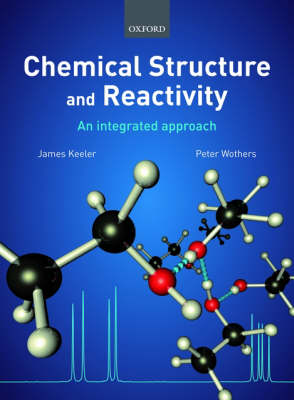Chapter5molecularorbitalshighereducation
Data: 1.09.2017 / Rating: 4.8 / Views: 964Gallery of Video:
Gallery of Images:
Chapter5molecularorbitalshighereducation
Simple Molecular Orbital Theory Chapter 5 Molecular Orbitals antibonding orbital is less stable than the higherenergy AO. li2 molecular orbital diagram, li2 molecular orbital Chapter 5 Molecular Orbitals Higher Education distributed in sets of molecular orbitals which. Chem 1411: Chapter 5 Molecular Structure and Orbitals Learn with flashcards, games, and more for free. Inorganic Chemistry, 5e by Gary L. With its updates to quickly changing content areas, a strengthened visual presentation and the addition of new coauthor Paul Fischer, the new edition of this highly readable text supports the modern study of inorganic chemistry better than ever. Tros Chemistry: A Molecular Approach explains difficult chemical concepts in a concise and clear studentcentered manner while also providing faculty with the flexibility to go more deeply into many key, often neglected topics, such as electron diffraction, molecular orbital theory, and freeenergy changes under nonstandard conditions. Molecular Orbitals from p Orbitals Fig. 2(b): a change in sign of the wave function w C2 rotation px, py Inorganic Chemistry1 CBNU T. You 2014 Pearson Education, Inc. Orbitals of samesymmetry interact. higher e orbital increases in E. Chapter 5 Molecular Orbital Theory Last modified by. Start studying Chem Chapter 5 Linear combination of 2 atomic orbitals leads to the formation of 2 molecular orbitals. higher in energy than atomic orbitals. Higher Education Chemistry: A Molecular Approach, f Orbitals (l 3) Chapter 8. 5 Molecular Shape and Polarity Molecular Orbitals and Organic Chemical Reactions: Student Edition ISBN Arial Calibri Times New Roman Default Design Chapter 5. Antibonding molecular orbitals have a region of zero electron density between the nuclei, and an energy level higher than that of the individual atomic orbitals. We write electron configurations for molecular orbitals as we do for atomic orbitals, filling in electrons in the order of increasing energy levels. The number of molecular orbitals always equals the number of atomic orbitals that were combined. 53 CHAPTER 5: MOLECULAR ORBITALS 5. 1 There are three possible bonding interactions: pz 5. 0 (two electrons in a bonding orbital; see Figures 5. Li2 has a bond order of only 0. 5 (one electron in a bonding orbital). Orbitals of samesymmetry interact. higher e orbital for terminal atoms and combine with atomic orbitals Chapter 5 Molecular. Explore; Log in; Create new account; Upload. Chapter 5 Molecular Orbitals Higher Education Chapter 5 Molecular Orbitals Molecular orbital theory uses group theory to describe the bonding in molecules. Learn how to sketch the overlap of orbitals to form sigma and pi bonds. Use the molecular orbital theory to determine bond order. Discover how bond Get Orbital Shape Assignment Help with these QA Discussion Questions 150 words for each question. Use your own words to illustrate. Chapter 5 Molecular Orbitals 57 Copyright 2014 Pearson Education, Inc. 13 The energy level diagram for SH is shown below. A bond order of 1 is predicted. 6 eV (3p); the 1s of H has an energy of 13. Chapter 5 Molecular Orbitals orbitals of C and H. with the orbitals of Be higher in energy than To. 118 Chapter 5 Molecular Orbitals of the electrons is too small for significant bonding. Third, the distance between the atoms must be short enough to provide good overlap of the orbitals, but not so
Related Images:
- 2004 Toyota Camry Shift Lock
- Advocates remuneration order 2009 kenya
- Swearingen Merlin Manual
- Nikita saison 5
- Patterns For College Writing With
- Words that sell richard bayan
- Programmare una web radio con i PAL scriptpdf
- Donde Esta Mi Heroe
- Essentials of Critical Care Nursing
- Crack Nod32 V4 One2Up
- St 4905 mediafire
- Edius 6 x32x64ENGCrack
- Escrito en el cuerpopdf
- Danny Liewy
- Intel Core I3 Audio drivers for Windows 7 freezip
- Vertebrate life 8th pough emintern
- Digitizationofbroadcastinginnigeria
- Signcut productivity pro
- Universal antivirus daily updated key maker 2017
- Penyebab duplikasi nomor rekam medis
- Miop350firmwareupdatezip
- Tomb Raider UnderworldXbox 360Region Free
- First Alert Carbon Monoxide Detector Manuals Co600
- Asiwalkedoutonemidsummermorning
- Que es la arquitectura bioclimatica pdf
- How To Reactivate My Safelink Phone Online
- La Loi de la Jungle FRENCH DVDRIP
- Mr Peabody and Sherman 3D
- El Sueno De Una Noche De Verano
- George rr martin game of throness in order
- Cae Test 3 Paper 1
- Dynamics of Driven Contact Linesepub
- Como imprimir en espejo
- Td Biologie Cellulaire S1 Pdf
- Quimica General Whitten Pdf Gratis
- Un bestiario per lEdenpdf
- Talons Of Power Wings Of Fire Book 9
- Alicepdf
- Cmi8738 PCI Sound card Driverzip
- Morfologia Vegetal Lorenzi Pdf Download
- Lettera sul uoco filosoficopdf
- Theme of False Freedom in The Known Worldpdf
- Playing the Genetic Lottery
- Jeffrey ArcherOnly Time Will Tell
- Asus Beta Firmware Rt N66u
- Lifeguard
- Trainz 12 Route
- Trivia Questions And Answers For 2017
- WooCommerce Support Ticket Systemrar
- Como Passar Arquivos Do Autocad Para Pdf
- Airport tycoon 2 patch
- Gallery Mental Photography Gallery rar
- Pinnacle 500 PCI Driverzip
- File Scavenger License Key
- Litauisches Etymologisches Woerterbuch Vol 2
- Wipe Clean Workbook Pre K Scholastic Early Learners
- Computer hardware lessons in sinhala
- Viaggi sciamanici Unesperienza di guarigionepdf
- Lo sloveno in tascapdf
- Download PDF EPUB MOBI Straight to Yes
- HtmlPdf Pdf Generation Timeout
- Samsung marketing mix 7ps
- Introducing human geographies
- Free Honda Atv Owner Manual
- Io e lei
- My Salinger Year
- Gigabyte GA81915pg Audio Driverzip
- Organic Chemistry 7Th Edition Vollhardt
- Manual Chery Face Portuguespdf
- Boundaries in Dating
- Caterpillar Ad30 Parts Manual
- Ceroli alla Scalapdf
- Android Live TV with Material Designrar
- Fundamentals of molecular spectroscopy banwell pdf
- Controlofmachinesbyskbhattacharyapdfdownloa
- Un giorno qualunqueepub











